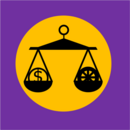Ostrothia
Republic of Ostrothia Ostrii Vabariik | |
|---|---|
| Motto: Isamaa eest! For Fatherland! | |
| Capital and | Rõlva |
| Official languages | Ostrothian |
| Demonym(s) | Ostrothian |
| Government | Unitary Parliamentary Republic |
• President | Artur Jõeäär |
• Prime Minister | Leana Aarma |
| Legislature | Rahvakogu |
| Independence from Republic of Valkea | |
• Tribal Era | 1st Century AD |
• First Crusades | 1217 |
• Duchy of Ostrothia | 1350 |
• Reformation | 1509 |
• National Awakening | 1867 |
• 1905 Revolution | 1905 |
• Valkean Assimilation | 1906-1917 |
• War of Independence | 1917 |
• Republic of Ostrothia | 1923 |
| Area | |
• | 63,400 km2 (24,500 sq mi) |
| Population | |
• Estimate | 2,890,000 |
| GDP (PPP) | 2021 estimate |
• Per capita | $52,543 |
| GDP (nominal) | estimate |
• Total | $58.97 billion |
• Per capita | $25,752 |
| Gini (2021) | 38.4 medium |
| Currency | Ostrothian Mark (OMK) |
| Date format | yyyy-mm-dd |
| Driving side | right |
| Calling code | +530 |
Ostrothia (Ostrothian: Ostrii), officially the Republic of Ostrothia (Ostrothian: Ostrii Vabariik), is a country in Astyria. Ostrothia covers a total area of 63,400 km2 (24,478 sq mi), and is influenced by a humid continental climate. Ostrothia is a member of the Lorecian Community. Rõlva, the capital of Ostrothia and Laadu are the largest cities and urban areas in the country. Other notable cities include Haku, Novessaare, Jõhku and Soulu. The official language of the country, Ostrothian, is a Valkenic language.
Ostrothia has been settled since 10,000 BC. In the first century AD counties known as Maakond were formed which were frequently raided by Vikings who founded the modern Ostrothian capital of Rõlva. Valkean crusades brought christianity to Ostrothia and by the 14th cemtury most of Ostrothia was under Valkean rule in the form of The Duchy of Ostrothia which was established in 1350. In the early 1500's the rerformation brought lutheranism to Ostrothia. In the 1860's the National Awakening saw the reemergence of the Ostrothian language and Ostrothian culture. This culminated in the 1905 revolution in which Ostrothian nationalists attempted to create an Ostrothian Republic. The revolution ended in 1906 as Valkea assimilated Ostrothia into Valkea proper. The Ostrothian language and national symbols such as the Ostrothian triband were banned. This caused Ostrothian nationalism to rise. In 1916 as Valkea fell into civil war Ostrothian nationalists claimed independence. The Valkean army invaded in early 1917 and the Ostrothian war of Independence insued. It lasted until August of that year as the Valkean armed forces was forced to focus on the civil war in Valkea. Ostrothia became a de facto independent state not gaining full recognition from the Valkean government as independent until 1923. Ostrothia joined the Lorecian Community in 1997.
History
Geography
Climate
Politics
 |
|
Government (98) Solidaasus ja Isamaa (98) Social Democratic Party (46) Ostrothian Greens (22) Liberal Reform Party (17) Conservatives of Ostrithia (7) |
Ostrothian politics works within the framework of a Unitary Parliamentary Republic. The Ostrothian president acts as the head of state, a largely ceremonial role the president is the face of the Ostrothian nation and leads on matters such as foreign policy as well as commanding the defence forces. The executive government of Ostrothia is led by the Prime Minister of Ostrothia. Legislative power in Ostrothia in Ostrothia is held by the Ostrothian Rahvakogu. The Rahvakogu is made up of 190 members and members are elected to the Rahvakogu every five years. The party with the majority of seats in the Rahvakogu gets to form the next government. All Ostrothian citizens above the age of 18 are able to vote. The judiciary of Ostrothia is highly independent and cconsists of the high curt followed by municipal and regional courts.
Administrative divisions
Foreign relations
Military
Economy
Transport
Energy
Demographics
Cities
Religion
Education
Culture



